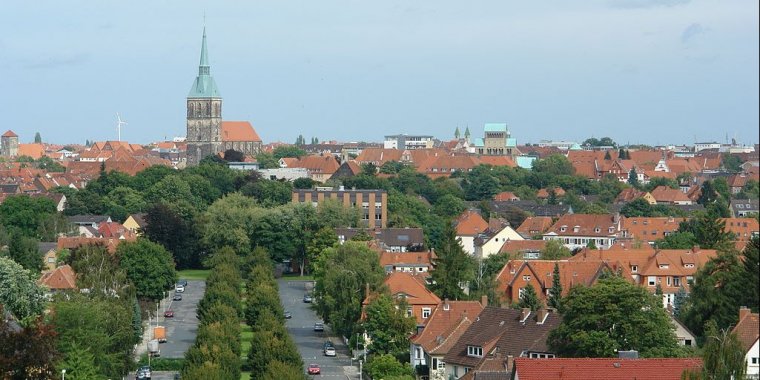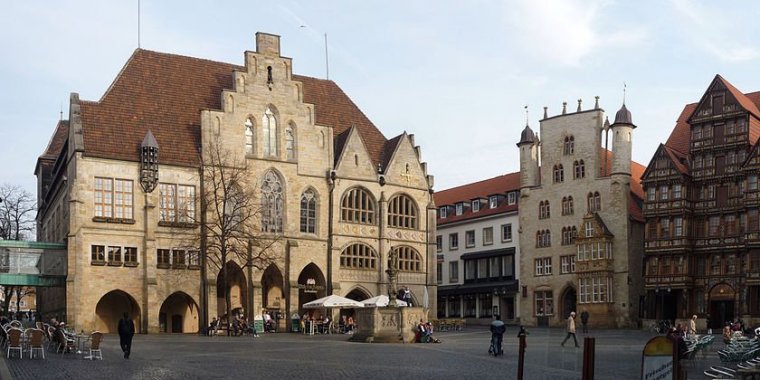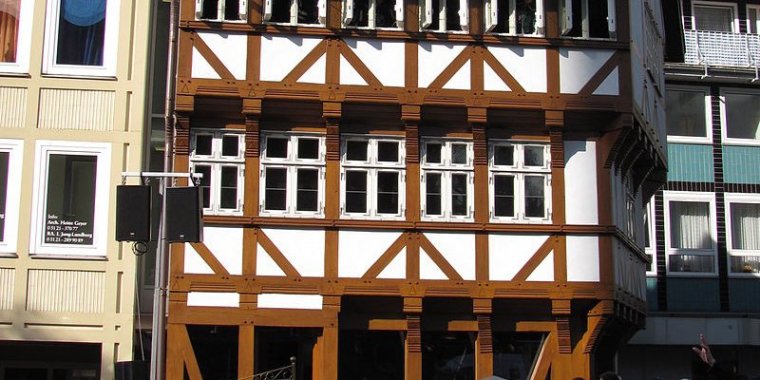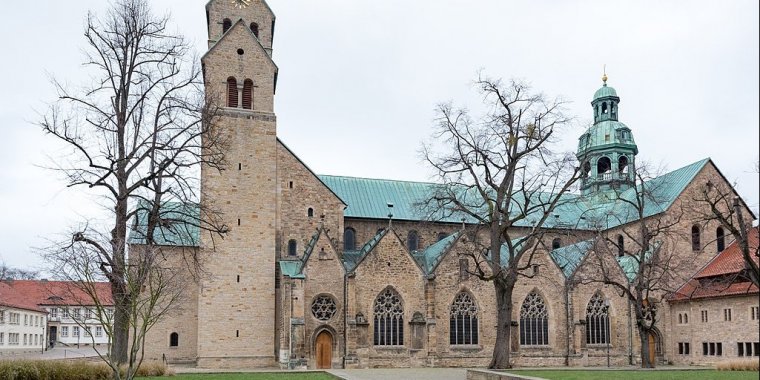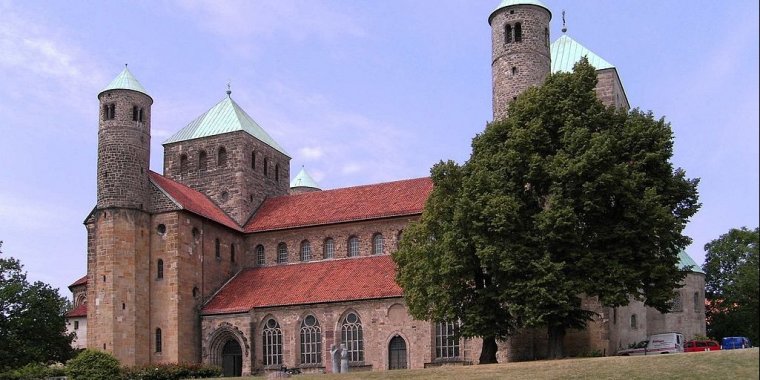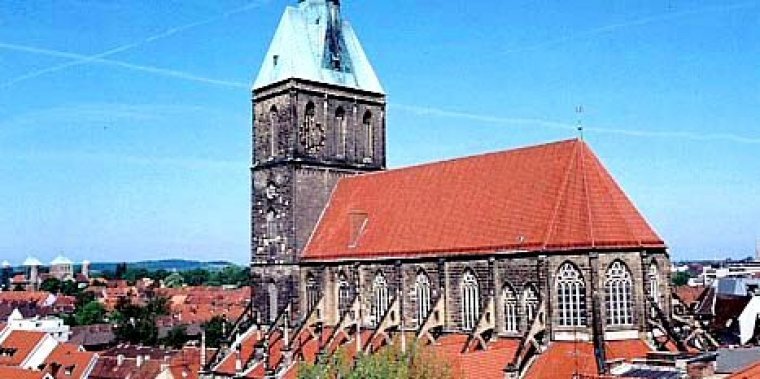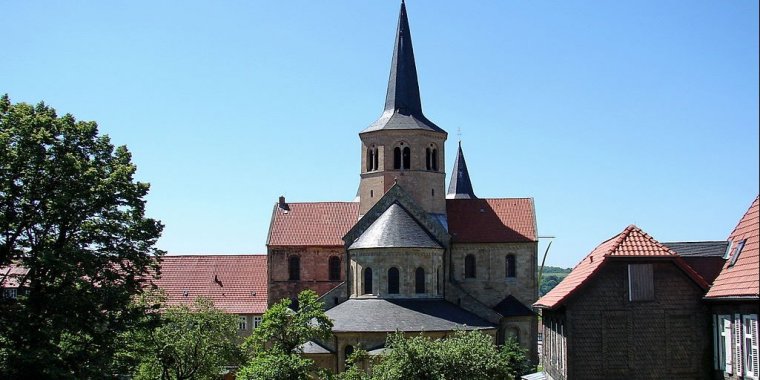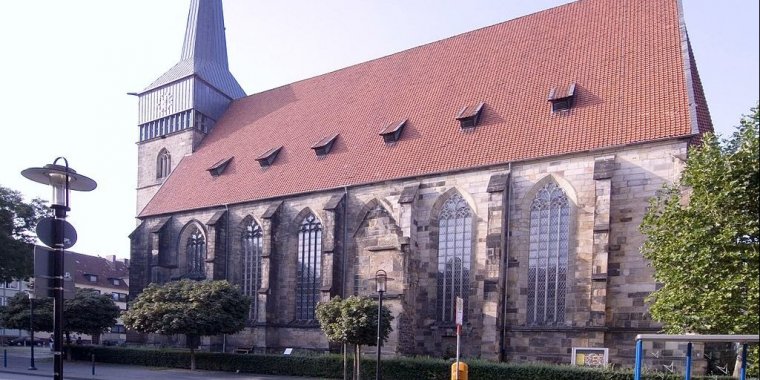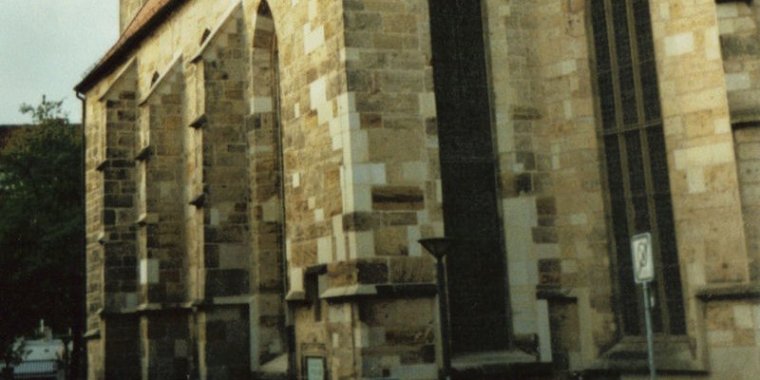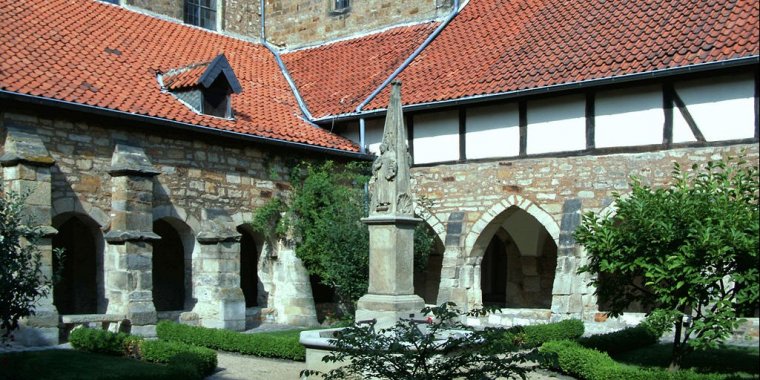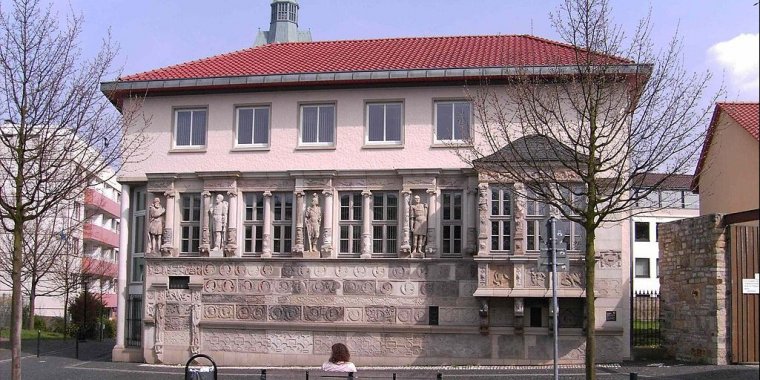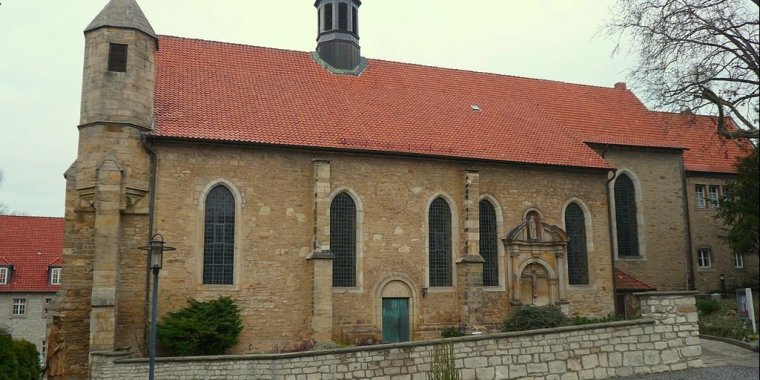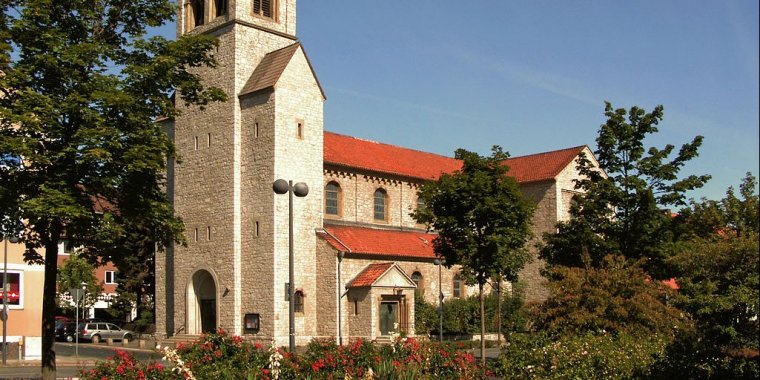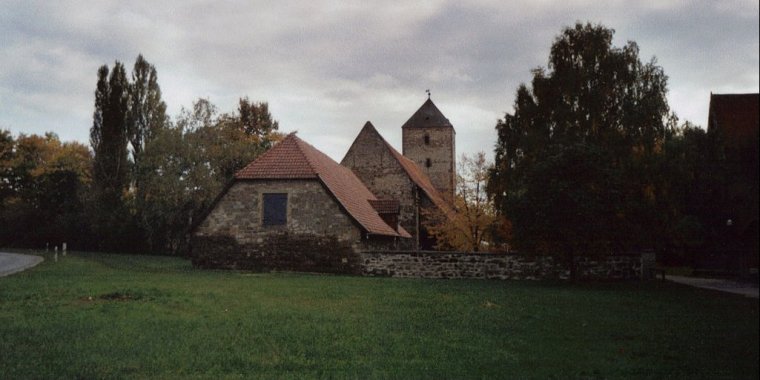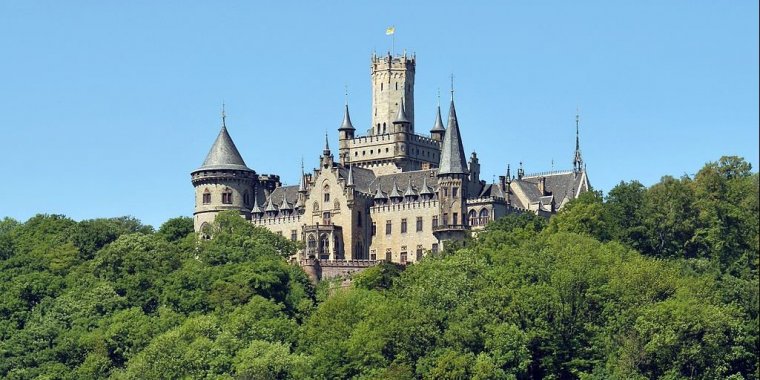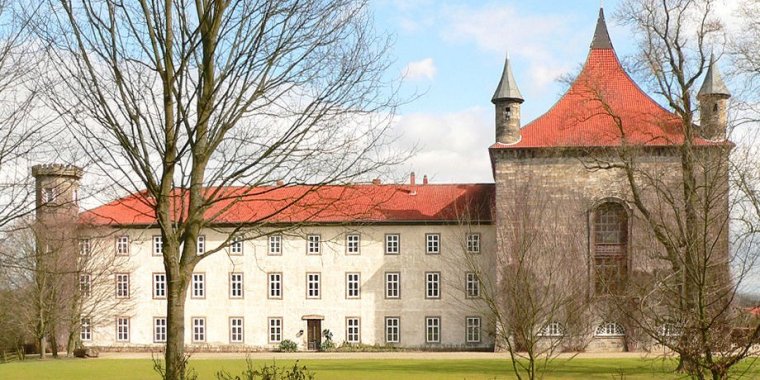| Published in Attractions / Places of Interest |
Tourist Attractions in Hildesheim, Germany
• Marktplatz (historic market place). - and surrounding buildings which include, among others, Rathaus (Town Hall), Knochenhauer-Amtshaus (Butchers' Guild Hall), Bäckeramtshaus (Bakers' Guild Hall), Tempelhaus and Wedekindhaus.
• Umgestülpter Zuckerhut (Upended Sugarloaf). Half-timbered house, built between 1500 and 1510, destroyed in World War II, reconstructed in 2010.
• St. Mary's Cathedral (Mariendom), Domhof. Open daily from 10AM to 6PM. UNESCO World Cultural Heritage, dates back to the 11th century. See the bronze doors and bronze column, both commissioned by Bishop Bernward around 1015 and the 1000-year-old rosebush in the cloister. Free.
• St. Michael's Church (St. Michaelis), Michaelisplatz. Open: Apr.-Oct. M,W-F 9AM-4PM, Tu 10AM-6PM, Su 12AM-6PM, Nov.-Mar. M,W-F 9AM-4PM, Tu 10AM-4PM, Sa 9AM-6PM, Su 12AM-6PM. Early Romanesque church famous for its Ottonian architecture and the unique "Jessebom", a painted family tree of Jesus-Christ on the wooden ceiling. Also World Cultural Heritage. Free.
• St. Andrew's Church (St.-Andreas-Kirche), Andreasplatz. Open: Apr-Sep. M-F 9AM-6PM, Sa 9PM-4PM, Su 11:30AM-4PM, Oct.-Mar. Mo-Sa 9AM-16PM, Su 11:30AM-4PM. It has the tallest church tower in Lower Saxony (114.5 metres, can be accessed and offers great views). Church: free, tower visit: € 2.50, children € 2.
• The Roemer und Pelizaeus Museum, Am Steine 1-2. Open Tu, W, F-Su 10AM-6PM, Th until 8PM, closed M. One of the oldest museums in Germany, with world class collections of natural history, ancient Egyptian and Peruvian antiquities, and local history. The museum is also noted for the quality of its special exhibitions. Entry: € 10, concessions: € 8, children 6-14 yrs € 5, family: € 20.
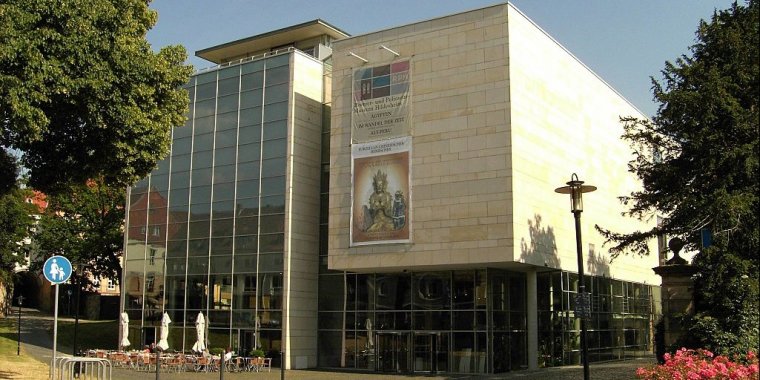
The Roemer und Pelizaeus Museum. ![]()
• Stadtmuseum Hildesheim, Markt 7. Open Tu-Su 10AM-6PM, closed M. Museum located in a reconstructed Knochenhauer-Amtshaus (Butchers' Guild Hall building) next to the Markt. Permanent exhibition concerns city history. Entry: € 2.50, children 6-14 yrs: € 1.50.
• Cathedral Museum (Dom-Museum), Domhof 18-21. Open Tu-Su 10AM-5PM, closed M. A rich collection of liturgical objects and works of art of exceptional quality spanning many centuries. Entry: € 6, children -18 yrs: free.
• The Kreuzkirche (Church of the Holy Cross) was originally a part of the medieval fortifications. It was converted into a church around 1079, severely damaged in 1945 and rebuilt after the war.
• The Romanesque Basilica minor St. Godehard (St. Gotthard's Church), built 1133–1172, which is scheduled to become a UNESCO World Heritage Site in the near future. Other notable buildings stand opposite the church: St. Nicolai's Chapel is a former parish church which was built in the Romanesque style in the 12th century and transformed into a residential building after 1803, and the Hospital of the Five Wounds which is a large half-timbered house dating from 1770 with a half-hip roof.
• The church St. Lamberti is a late Gothic building, venue of a weekly concert series at market time.
• The Kehrwiederturm (Kehrwieder Tower), built around 1300, is the only remaining tower of the medieval fortifications.
• The church St. Jacobi (St. James' Church) is a 500-year-old pilgrim church in the Gothic style and was one of the many St. James chapels on St. James's Path. Today the church is a culture church with emphasis on literature.
• Mauritiuskirche (St. Maurice's Church), a Romanesque church (11th century) on a hill in the west of the city in the quarter of Moritzberg with a cloister. The interior of the church is Baroque and the tower was added in 1765.
• Kaiserhaus (Emperor's House): Renaissance building (1586) in Alter Markt, the oldest street of Hildesheim, rebuilt after the war. The façade is decorated with Roman statues and medallions. Opposite, there is a noteworthy sandstone bay window dating from 1568. Originally, it belonged to a private house which was torn down at the end of the 19th century. The bay window was dismantled before and added to another house in the eastern part of Hildesheim which remained undamaged during World War II. From there, the bay window was removed when the house was remodelled and added to the school at the present site in 1972.
• Close to the Kaiserhaus (Emperor's house) the Alte Kemenate, a noteworthy medieval store house reaching a height of 5.5 meters, can be seen behind the school in the street Alter Markt. It has a rectangular basis measuring 6.5 meters × 5.0 meters and a cellar with a vaulted construction. The store house, one of the oldest profane buildings in Hildesheim, was built of sandstone in a Gothic style the 15th century. According to other sources it might be even older, i.e. built between the end of the 11th and the middle of the 13th century. The building has two floors. As it did not consist of wood it did not burn down in 1945, but was only damaged and immediately repaired after the war. From 1945 - 1951 it was used for residential purposes. The Alte Kemenate is not open to the public.
• St. Magdalena's Church (Magdalenenkirche) is a small church with large lancet windows in the historic street Old Market (Alter Markt) which was consecrated in 1224. It was originally built in a Romanesque style, but enlarged and remodelled in Gothic style in 1456. It houses a wooden altar (about 1520) with carvings and other works of art. The small street Süsternstraße features a well-preserved part of the medieval city wall with a round tower. Opposite the church, a tall half-timbered house which was rebuilt in 1981 on the medieval city wall can be seen in the small side street Mühlenstraße. The façade is decorated with wood carvings.
• Magdalenengarten, a Baroque park which was laid out in 1720–1725, is near St. Magdalena's Church. There are many different kinds of rose bushes, a rose museum, pavilions, Baroque statues, a well-preserved part of the medieval city wall in it and even a vineyard yielding 100–200 bottles of wine per year. In spring, a rare species of wild yellow tulips (tulipa sylvestris) blossoms in the western part of the park.
• St. Bernward's Church, a neo-Romanesque church built 1905–1907, destroyed in 1945 and rebuilt from 1948 to 1949, houses a Gothic wooden altar retable dating from the beginning of the 15th century.
• A part of the medieval defence system consisting of a wall with moats and ramparts which was built around the city in the 13th century is well preserved. Kalenberger Graben, an artificial lake, is a part of it. It is surrounded by a park. In April a rare species of wilde yellow tulips (tulipa sylvestris) blossoms in the park.
• Steuerwald Castle (Burg Steuerwald) in the north of the city, about 3 km (2 mi) from the Market Place, was built 1310–13. Its tower (25 m) was added in 1325. The chapel, dedicated to St Magdalena, was originally built in the Romanesque style and transformed into a Gothic chapel in 1507. Today it is used for weddings and concerts.
• Sorsum is a former village in the West of Hildesheim which became a part of the city in 1974. There is a former domain, founded in the Middle Ages, which was transformed into a residential area after 2000. The pigeon tower, built in 1733, the large barn (1786) and the manor house dating from 1734 are the most notable sights in this rural part of Hildesheim.
• Marienrode Priory (Kloster Marienrode) is in the southwest of Hildesheim, about 6 km (4 mi) from the Market Place. It was founded in 1125. The foundation stone of the present church was laid in 1412. The church was built in Gothic style with three naves and completed in 1462. The Baroque ridge turret was added in the 18th century. In the church, there are two noteworthy Baroque altars dating from 1750 approximately and a Gothic sandstone sculpture of Saint Mary which was made in 1460. The organ dates from the middle of the 18th century. A small chapel of the priory, Saint Cosmas and Damian, which was built in 1792, was converted into a small Protestant church in 1830. The priory was dissolved in 1806, but returned to the Catholic Church in 1986. Since 1988, it has again been operated by nuns. Near the monastery there is a large fishpond with a tall windmill built in 1839.
• Castle Marienburg (Schloss Marienburg), Marienburg 1, 30982 Pattensen (20km south of Hanover, 16 km west of Hildesheim). Open daily from March until the end of October from 10.00AM to 6.00PM. The last castle tour begins at 5:00PM.. Considered one of the most important neo-Gothic historical buildings in Germany, the castle will transport you back to a day in the life of a Hanoverian court. Its many turrets dominates the rolling hills of the valley of the River Leine. You can take a comprehensive tour of the castle allowing you to see its grand halls and historic rooms. Prices: €7, children 4–6 years: €4, 7-12 y.: €5, 13-17 y.:€6.
• Schloss Derneburg (Hall Art Foundation), Schlossstraße 1, 31188 Holle; visitor center: Astenbeck 42, 31188 Holle, e-mail: derneburg@hallartfoundation.org. Sat/Sun 11am (5 hr tour), short tour availabe Wed/Sat at 3pm. Formerly home to the artist Georg Baselitz, this castle has opened to the public in 2017. Now owned by Andrew Hall, who renovated and curated art exposition with his wife Christine. It is within the boundaries of the village Derneburg, being part of the Holle municipality, 75 Euro long tour (incl. lunch), 30 Euro short tour. (Wikivoyage, Wikipedia)
See also Hildesheim in Pictures
YOU MAY ALSO LIKE






 If you own or manage a travel-related business such as a hotel, a bed-and-breakfast, a restaurant, a pub or a cafeteria, you can create a web page for your business for free on Titi Tudorancea Travel Info. » |
